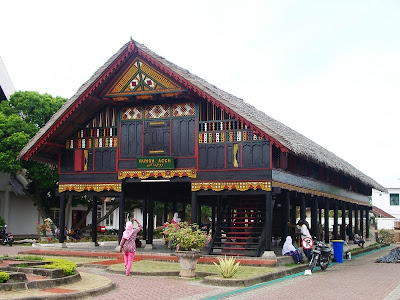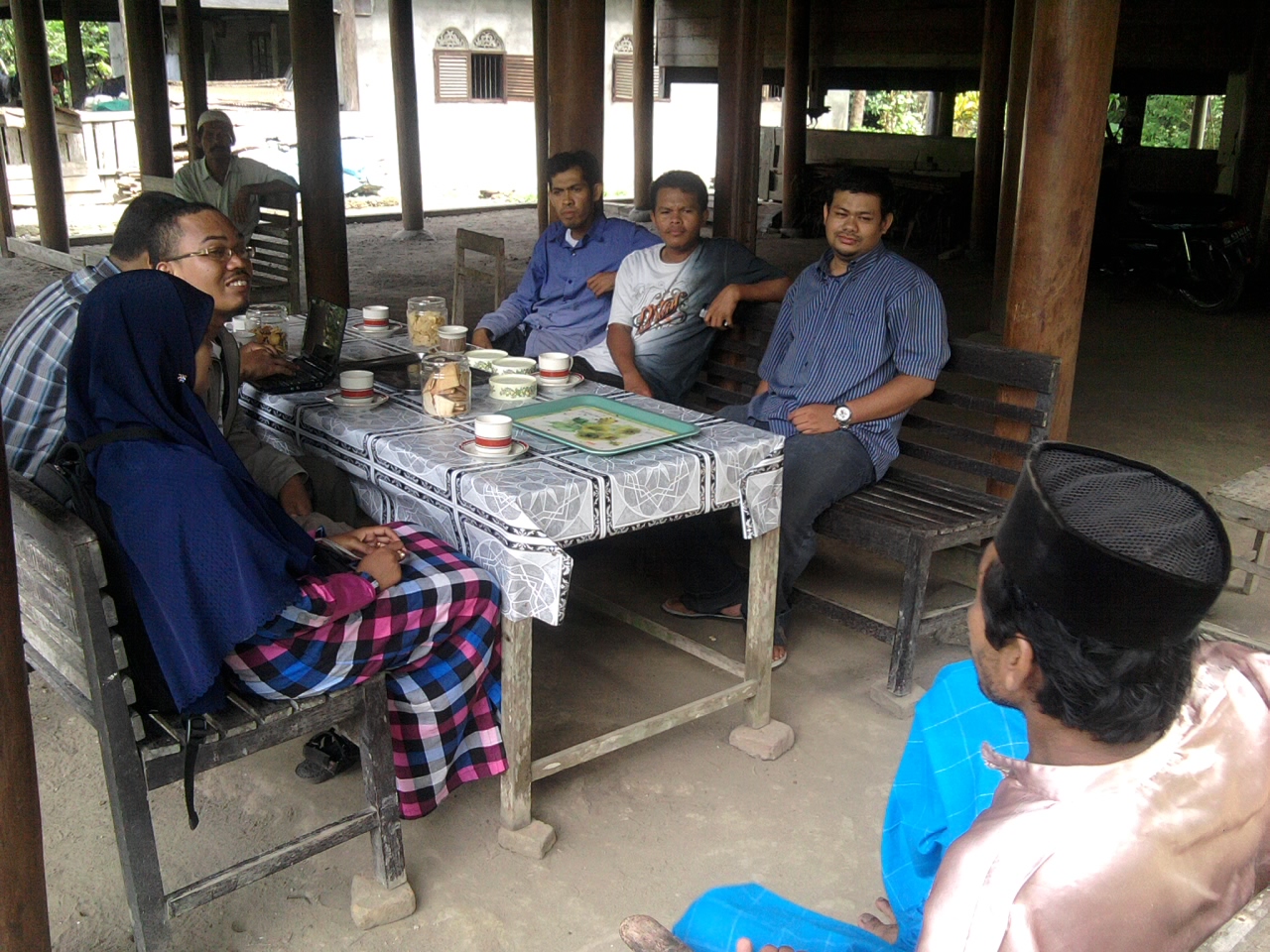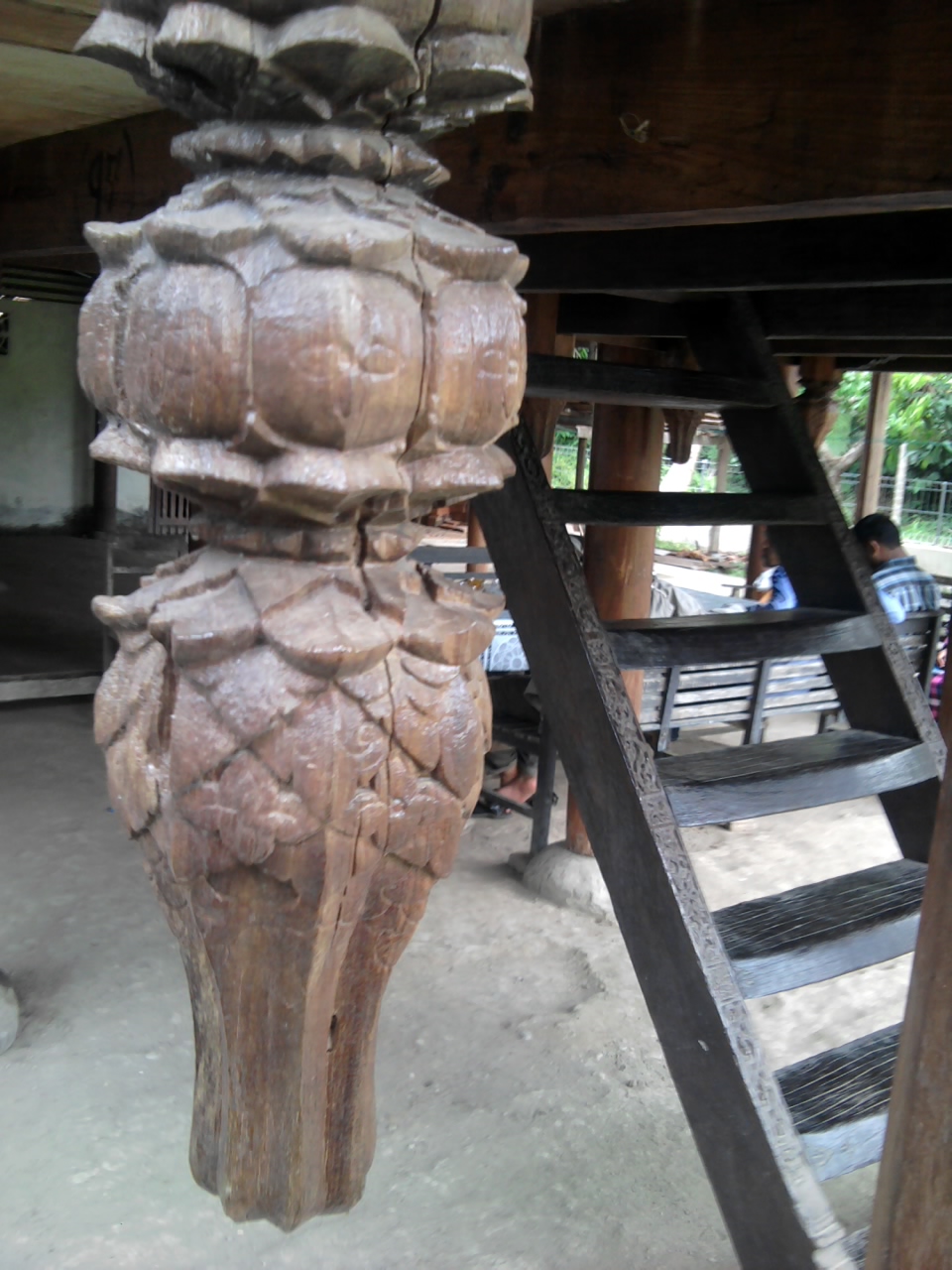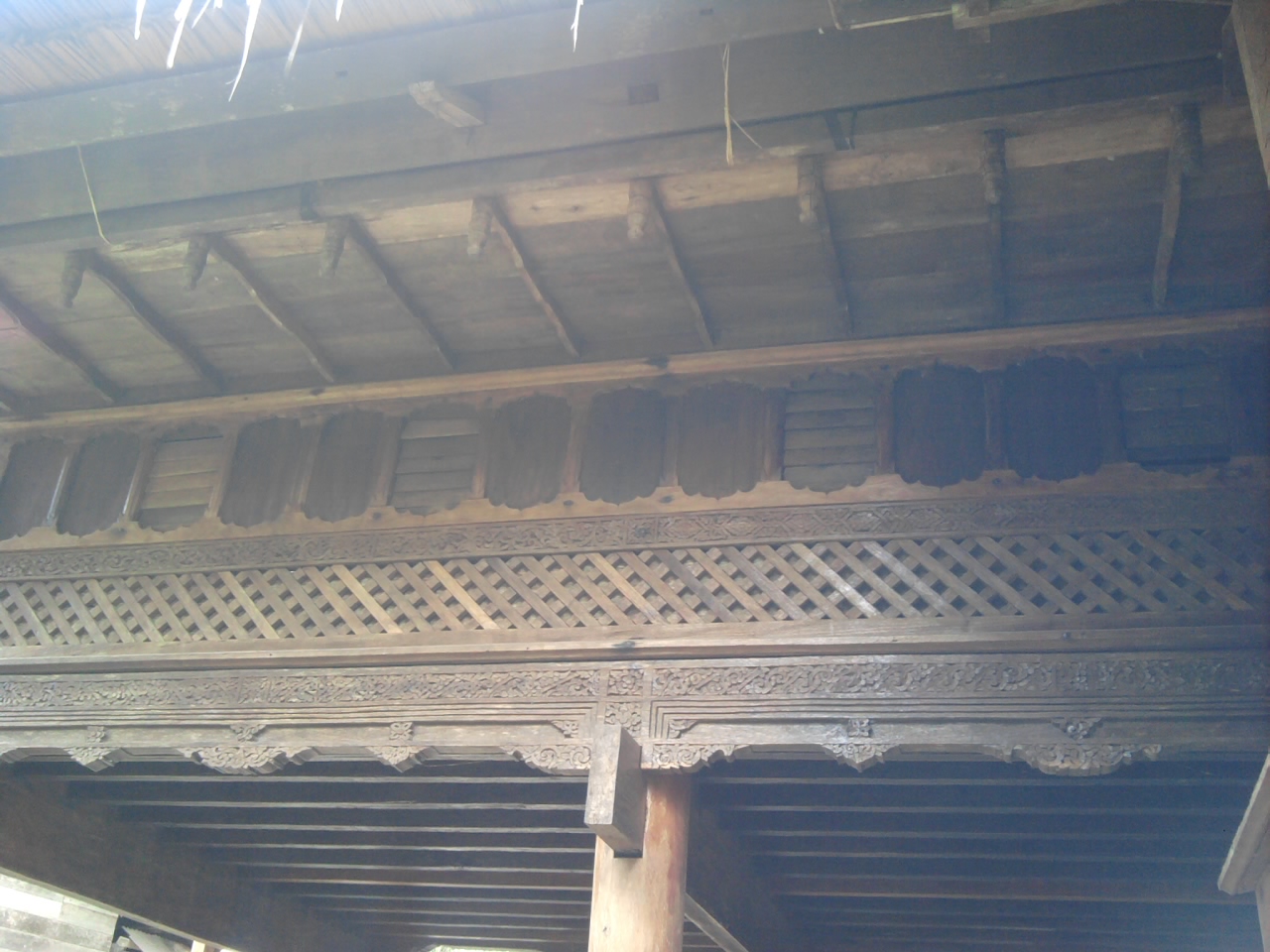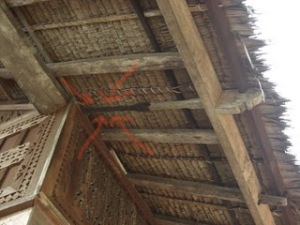1.1 Background
Aceh had previously been referred to as the Special Region (1959-2001)
and Aceh (2001-2009) is the westernmost province of Indonesia. Aceh has set up its own autonomy, in contrast to most other provinces in Indonesia, due to historical reasons.
The area is bordered by the Bay of Bengal to the north, the Indian
Ocean to the west, the Strait of Malacca in the east, and North Sumatra
in the southeast and south. Aceh capital of Banda Aceh is. Ports is Malahayati-Krueng Ulee Lheue, Sabang, Lhokseumawe and Langsa. Most of the population in Aceh embraced Islam. Of the 13 indigenous tribes in Aceh Nias tribe just is not all converted to Islam.
Other religions embraced by the population in Aceh was Christianity
professed by the Batak migrants and some Chinese who mostly Hakka
tribes. While others still adhere to the Confucian religion.
In addition the province has a distinctive compared to other provinces,
as in the province of Islamic law applied to the majority of the
population that adheres to Islam. The history and development of ethnic Acehnese also attracted the attention of anthropologists such as Snouck.
In terms of culture, Aceh has a unique culture and diverse.
Acehnese culture is heavily influenced by the Malay cultures, because
of the strategic location of Aceh as a trade route then go Middle
Eastern cultures. Some of the existing culture is the result of acculturation between the Malay culture, the Middle East and Aceh.
Tribes who inhabit Aceh are the descendants of people wither and the
Middle East this causes the faces of different people of Aceh Indonesian
people who are in other areas.
Acehnese ethnic social systems, livelihoods most Acehnese is farming, but not least also the trade. Acehnese kinship system known Wali, Karong and Kaom that are part of the kinship system.
1.2 Objectives of Making Paper
At the writing of this paper there are some goals that we describe, among others:
- As one of the requirements to fulfill the task of Cross-Cultural Psychology
- From the results above we would like to know some more about Aceh and culture
- To help students understand the culture of Aceh
1.3 Methods of Data Collection
In collecting the data, we use secondary data collection methods, the
data collection indirectly through existing information such as the
Internet.
CHAPTER II
INTRODUCTION AND HISTORY OF ACEH
2.1 Introduction of Aceh
Aceh had previously been referred to as the Special Region (1959-2001)
and Aceh (2001-2009) is the westernmost province of Indonesia. Aceh has set up its own autonomy, in contrast to most other provinces in Indonesia, due to historical reasons.
The area is bordered by the Bay of Bengal to the north, the Indian
Ocean to the west, the Strait of Malacca in the east, North danSumatera
in the southeast and south.
Aceh capital of Banda Aceh is. Ports is Malahayati-Krueng Ulee Lheue, Sabang, Lhokseumawe and Langsa. Aceh was the region worst hit by the earthquake and tsunami of December 26, 2004. Some places on the coast completely destroyed. The hardest was Banda Aceh, Aceh Besar, Aceh Jaya, West Aceh, Singkil and Simeulue.
Aceh has a wealth of natural resources such as petroleum and natural gas. Natural resources it is located in North Aceh and East Aceh.
Aceh is also famous for its forest resources, which lies along the
Bukit Barisan range, from Kutacane, Southeast Aceh, Seulawah, Aceh
Besar, until Ulu Masen in Aceh Jaya. A national park, the Gunung Leuser National Park (TNGL) are also found in Southeast Aceh.
A. History of Aceh
At the time of reign of Sultan Iskandar Muda Meukuta Perkasa Alam, Aceh is a country that is very rich and prosperous.
According to a French explorer who arrived in Aceh in the heyday of the
era, the power reaching the west coast of Aceh Minangkabau to Perak.
Sultanate of Aceh have established relationships with the kingdoms of
the West in the 16th century, including the British, Ottoman, and the
Netherlands.
Sultanate involved a protracted power struggle since the beginning of
the 16th century, first by the Portuguese, and since the 18th century
denganBritania Kingdom (UK) and the Netherlands.
At the end of the 18th century, Aceh was forced to give up territory in
Kedah and Penang in the Malay Peninsula to the United Kingdom.
In 1824, the Anglo-Dutch Agreement was signed, in which Britain handed over its territory on Sumatra to the Dutch. The British claim that Aceh was their colony, although this is not true. In 1871, Britain allowed the Dutch to colonize Aceh, possibly to prevent France from gaining power in the region.
1. Sultanate of Aceh
A continuation of the Sultanate of Aceh Sultanate Pasai Ocean destroyed in the 14th century. Sultanate located north of the capital pulauSumatera Kutaraja (Banda Aceh).
In the long history (1496 - 1903), Aceh has carved his past so grand
and amazing, especially because of its ability to develop a pattern and
system of military education, its commitment against European
imperialism, a system of regular and systematic government, realizing
the center- science assessment center, to the ability to establish
diplomatic relations with other countries.
2. Aceh War
Aceh War began in the Netherlands declared war on Aceh on March 26,
1873 after doing some diplomatic threats, but did not win a large area. War broke out again in 1883, but again failed, and in 1892 and 1893, the Dutch believed that they had failed to seize Aceh.
Dr.
Christiaan Snouck, an expert who pretended to convert to Islam from
Leiden University have managed to gain the confidence of many Aceh
leaders, and provide advice to the Dutch that their attacks directed to
the clergy, not to the sultan. This suggestion was successful.
In tahun1898, Joannes Benedictus van Heutsz expressed as the governor
of Aceh, and with his lieutenant, Hendrikus Colijn, captured much of
Aceh.
Sultan M.
David finally meyerahkan themselves to the Dutch in 1903 after two of
his wife, children and his mother were arrested by the Dutch advance. Sultanate finally fell in 1904. At that time, the capital of Aceh has fully seized the Netherlands.
But the resistance is still being conducted by the commander-chief in
the interior and by the Aceh Ulema until japan in and replace the role
of the Dutch.
Aceh War was a war of the most detrimental to the Dutch colonial history Archipelago.
3. Language
The province has 13 pieces of original language is Acehnese, Gayo,
Aneuk Jamee, Singkil, Alas, Tamiang, Kluet, Devayan, Sigulai, Pakpak,
Haloban, Lekon and Nias.
4. Religions
Most of the population in Aceh embraced Islam.
Of the 13 indigenous tribes in Aceh Nias tribe just that not all of the
other Islam.Agama religion embraced by the population in Aceh was the
Christian religion professed by the ethnic Batak migrants and some
Chinese who mostly Hakka tribes.
While others remain embraced it Konghucu.Selain province has a
distinctive compared to other provinces, as in the province of Islamic
law applied to the majority of citizens who embraced Islam.
B. History and Culture Introduction Aceh
Aceh is one of the regions in Indonesia which has a variety of cultural
interest, particularly in the form of dance, crafts and celebration /
festivity. In Aceh there are eight sub-tribe of the tribe of Aceh, Gayo, Alas, Aneuk Jamee, Simeulu, Kluet, Singkil and Tamiang. The eight sub-ethnic groups have a culture very different from one another. Spare Gayo and Alas is a tribe who inhabit the highlands of Central Aceh and East Aceh.
Tribes who inhabit Aceh are the descendants of people wither and the
Middle East this causes the faces of different people of Aceh Indonesian
people who are in other areas. Acehnese ethnic social systems, livelihoods most Acehnese is farming, but not least also the trade. Acehnese kinship system known Wali, Karong and Kaom that are part of the kinship system.
Islam is the dominant religion in Aceh Aceh therefore dubbed the "Veranda of Mecca". From the known structure of the Acehnese village, mukim, nanggroe and so on. But at the present moment is a ceremonial ritual massive only as a symbol that the core of the ceremony is not reached. Shifting cultural values is because the occupation and other fakttor.
C. The nature of the cultural system of Islamic Aceh
Contains Islamic law is the law and Islamic rules that govern all aspects of human life, both Muslim and non-Muslim.
Sources: Al-Qur'an (the first source of Islamic law), Hadith (the whole
word, deed, and the approval of the Prophet Muhammad who later used as a
source of law), Ijtihad (to establish Islamic law based on the Quran
and Hadith).
Therefore all branches of life: political, economic, social and cultural should not be contrary to the teachings of Islam.
D. Kinship Systems
Kinship group is the smallest incest family consisting of father, mother and children who are not married. But for boys from the age of 6 years to do with the parents began to be restricted. The process of socialization and enculturation lot more going on outside the family.
E. Art
The style of art Aceh was heavily influenced by Islamic culture, but it
has been processed and adapted to the cultural values prevailing. The famous dance from Aceh, among others Seudati, Seudati inong and Seudati fiance.
Another art is the art of Arabic calligraphy developed, such as that
seen in many carvings of mosques, traditional houses, ritual tools,
jewelry, and sebagainnya. Besides developing the literary arts in the form of having Islamic saga, like Saga Sabil War.
Art forms Aneuk Jamee from two culturally assimilated.
People familiar with the arts Seudati Aneuk Jamee, dabus (dabuih), and
ratoh that combines elements of dance, music and sound art. Additionally known tale, which tells of a character art is peppered with tales.
A cultural element that never flagging in Gayo society is art, which almost never stagnate even tend to thrive. Gayo famous art form, including saman dance and theater arts called Didong.
In addition to entertainment and recreation, art forms it has the
function of ritual, education, information, as well as a means of
maintaining balance and social structure of society.
In addition there is also a form of art bines, teachers Didong and
melengkap (art speech customary), which is also not forgotten from time
to time.
F. Cultural Assimilation in Aceh
Every nation has their cultural patterns. Owned cultural distinctiveness of an area is a reflection of the regional identity. Aceh has many distinctive cultural style.
Culture is also a social legacy that can only be owned by the community that supports it.
Prof Dr H Aboebakar Atjeh in his paper on the seminar Aceh Cultural
Week (PKA) II, wrote in August 1972 that initially the customs and
culture of Aceh is very thick with Hindu influences. He referred to several previous books ever written by an oriental.
It happened because before Islam came to Aceh, the Acehnese people are influenced by Hindu elements.
After Islam came hindu elements that are contrary to Islam removed,
However the tradition which was considered not deviate maintained.
All cities after islam hindu strong in Aceh was destroyed.
Traces of it can still be checked empire despite being buried, like in
the Paya Seutui, District Ulim (Ulim border with Meurah Two), Ladong
ruins. Even according to HM Zainuddin, Indrapuri mosque built on the ruins of the temple.
In 1830, Haji Muhammad, better known as Lord Tambusi also tear down the
temples and the stone then used to build mosques and fortresses.
Asimiliasi customs and cultures that gave birth to the cultural customs and culture of Aceh as applicable now. An adage in hadih maja mentioned,
"Mate aneuék meupat jeurat, gadoh Tamita customary pat." Phrase is not just a mere saying.
But the statement also contains an affirmation of the importance of
preserving tradition and culture as a social institution bermayarakat
life.
Western culture also pass a non formal law in society, the customary
law which is the law of pelengkat generally applicable law (positive
law). Besides subject to positive law, the public is also bound by customary law and regulations.
Aceh has its own peculiarities in customary law with customary institutions that have existed since the time of the kingdom.
Customary law has been adapted to the philosophy of Islamic law, so it
is difficult to distinguish between legal and customary itself. As reflected in hadih maja,
Hukom Ngon Ngon sifeut custom lagee substances, syih han jeut meupisah two.
G. & Lifestyle Group Acehnese
Local shape of the smallest living entity called the village (kampung or village) headed by a geucik or kecik. In every village there is a meunasah (madrasah) led a imeum meunasah.
A collection of some village called mukim led by a uleebalang, that the
captains who contributed to the social and religious sultan.Kehidupan
in every village led by traditional leaders and religious leaders, such
as imeum meunasah, teungku preacher, Tengku bile, and tuha peut (
custom advisor).
While Aceh Community Group, in the past the people of Aceh to know some social layers.
Among them there are four groups of people, namely the Sultan family
groups, group uleebalang, clergy groups, and groups of ordinary people. Group family is a descendant of the former sultans sultans who once ruled. Calls for common descent is Ampon sultan for men, and cut for women. Group uleebalang are descendants subordinate sultans who controlled small areas under the kingdom. Usually they Teuku title. While the clergy or religious leaders or commonly known as Tengku Tengku.
CHAPTER III
CHANGES IN CULTURAL PHENOMENON IN ACEH
Phenomenon 1:
Cultural Shifts From Post-Tsunami Aceh
Ridwan Sjah (02/22/2005 - 08:09 pm)
Jurnalnet.com Jurnalnet.com (Banda Aceh):
Acehnese culture is inseparable from the culture of Islam in Aceh since
Pasai Ocean Empire, which became the center of broadcasting Islam in
Southeast Asia, is now gradually shifting post-earthquake followed by a
devastating tsunami devastated Aceh Darussalam (NAD) and killed over
200,000 people man on December 26, 2004. Shifting the culture, be seen in the character dressed for Muslimat. Muslim women must wear clothes that cover genitalia complete with a veil that covers the head to below his shoulders.
If before the disaster, the Acehnese taboo to see women walking without
a veil that covers the head to the shoulders, then the post-tsunami
seemed to have not a taboo anymore. No one rebuked, no one else cares.
Muslimat are seen leisurely walk through the streets without wearing
hijab, whereas before they seemed to always wear the veil in the lawless
province of Islamic law since the government of President Abdurrahman
Wahid (Gus Dur) it.
Women Muslimat post-natural disaster that had dared to sit on a bike
rode the dikenderai a man who is not a mahram without wearing hijab, as
every day is now visible in the streets of the capital of Banda Aceh.
Looks motorcycle ride three people, a man who mengenderainya with two women sitting in the back.
The women were not veiled, even back skin and underwear visible, such
as clothing that is now widely used young Indonesian women today. In fact, it had never encountered in the country who runs the Islamic Shari'a.
As proclaimed Islamic Sharia to be implemented in the country which is
known as Mecca's Porch, Muslimat women simultaneously welcomed by
wearing clothes with a scarf Muslimat.
Nanggroe (country) Aceh Darussalam (safety zone) is the only area of
the privileged, since the government passed the area as an area that
can perform the Islamic Shari'a, and the people of Aceh who missed the
welcome Shari'a implementation.
However, the culture began wearing hijab decaying, especially the
post-tsunami that destroyed 15 of the 21 cities in Aceh and destroyed
nearly all home residents.
Many children have been orphaned, do not have a father and mother, or a
father does not have a mother and vice versa, his relatives were dead
or missing in the tsunami.
H.Abdullah said, one of the leaders in Aceh,
"If
non-Muslims is understandable, but it is a lot women Muslimat start
taking off the veil, not like the old days before the devastating
earthquake and tsunami that has killed and eliminate over 200 thousand
people in Aceh "Apparently the most devastating natural disaster in
Indonesia that does not make people frightened and wary, even women are
now more desperate, he said.
In restaurants and shops in Banda Aceh, many women do not wear hijab Muslimat. They sat chatting, joking as if nothing ever happened devastating natural disasters in the region.
Imam Mosque in Lampaseh Babussalam, Meuraxa district, Banda Aceh,
Basri, also expressed concern, because it can no longer apply the
Islamic Shari'a in Aceh earth, since the region during the reign of
Sultan Iskandar Muda-known strong hold the principles of Islamic
Sharia. "We want to implement Islamic law, but on the other circumstances that do not support the implementation of sharia," complained teuku it.
He admitted as much wickedness going on in Aceh and the disaster is a
warning to the people of Aceh Indonesia in particular and the nation in
general and this should be a whip for humans, in order to run the
Islamic Sharia in earnest.
"This is God's wrath, for disobedience many were occurred in Aceh earth. They do not love the mosque, which became the center of worship for Muslims, "he said.
Most areas of Banda Aceh, Aceh Besar, Aceh Jaya, was destroyed, but the
mosque remains standing upright, not exposed to the wrath of the
tsunami and terkaman. Man should be willing to repent to Allah before the same event over and over again.
Also you do not seem to wear hijab for cultural erosion Muslimat, Aceh
is also not apparently harmed by the start of affection among the
Islamic community in the country.
Dr. H.
Bukhari Daud, MEd, educational leaders in the area, said, now are
beginning to look again there is love among the Acehnese are Muslims but
Islam teaches that Muslims were compassionate.
"No more love among the community . In
fact, there are up to the heart and the heart to cut off the fingers
and arms dead woman to take gold in the ring finger and the hand, "he said.
There are also people take home fences are still good, then destroyed
and transported by car to be sold, and that the rights of others, he
added. He said the concern over the bad deeds, and ask that the perpetrators are aware, do not commit that sin.
He asks, that the entire country boy (Aceh) and mengakaui realize mistakes over the years.
"Sesalilah all our fault deep, then repent to Allah with all sincerity." He berharapkan Similarly, people move from bad to good habits.
Analysis:
According to our group, why the tsunami in Aceh, many women take off
veil / scarf, which is difficult to control because of disappointment to
his Creator.
They felt it was running properly religious Shari'a, such as prayer,
chanting, avoiding prohibited religion, and so forth, but their homes
still a terrible disaster struck. Post-tsunami, they might think, to what religion sharia run, if disaster struck eventually anyway. In addition, they lose their role models during life, such as family, relatives, and the local cleric who often lead them.
Plus, foreign cultures, especially western culture is slowly entering
into the territory of Aceh itself, making the locals will not forget the
old culture they have long done. Because some of it, they feel helpless and decided to take cover their private parts, in this case the veil / hijab.
Phenomenon 2:
The story of punk kids in Aceh police building
December 20, 2011 - 2:26 am
Kids Story scouted Aceh Punk Police
There were admitted sad and no one wanted to change for the better.
VIVAnews - As many as 65 members of the punk community in Banda Aceh
were arrested after holding a concert this weekend, get guidance on
Police School (SPN) Aceh Besar.
Some are sad and some are claimed to want to change for the better when
following the guidance that was held from Tuesday, December 13, 2011.
Wearing clothes police, during the 10 days they trained line of march. They also get guidance and trained mental discipline. When you first enter the training camp, their hair had been shaved and they are required to bathe regularly.
M Fauzi, one of the trainers of the NES Seulawah said during police
training in place, they were educated discipline and physical exercise
to maintain fitness. They also got a lesson and bring depth Aqeedah with teachers and pastors from outside the school police.
"This morning, a team of Ulema Consultative Assembly (MPU) also came to guide them.
There are 18 non-Muslim people and we call the pastor to guide them,
"said Fauzi, in SPN Seulawah, Aceh Besar, while converse with
VIVAnews.com, Friday night December 16, 2011.
Of the 65 people arrested and brought up on the NES Seulawah, 30 of
which came from a number of areas such as Banda Aceh, Aceh, Lhokseumawe,
Bireun, Tamiang, and Takengon.
The rest came from other provinces such as North Sumatra, Lampung,
Palembang, Jambi, Batam, Riau, West Sumatra, Jakarta, Bali and West
Java.
Punk community members has also been checked. Three of them had detectable hepatitis symptoms. "Three are the symptoms of hepatitis and one positive. Every morning we check their health, if health is not possible, he did not allow us to follow the activities, "said Fauzi.
Arismunadar, 15 years, one of the punk kids who also attend the
training since his arrest admitted sad because she can not go to school. Arismunandar from Medan, North Sumatra and came to Banda Aceh to participate in a charity concert held Punkers Aceh.
When leaving for Banda Aceh, he also asked permission of his parents.
But since his arrest, he could not preach his condition to his parents
as his mobile phone was confiscated while during the coaching process.
"I do not know how the parents react if he found out I was brought here, I want to contact the parents. But, how do because my phone was taken, "he said.
Punk other members, Sarah, 18 years old, during the training admitted
he got a lot of knowledge about the discipline and religion. Dara origin Bireun district was admitted to joining in the punk community because of lack of love his parents.
"Following from here I want to go back to school, I wanted to change and be better," he said. (Report: Riza Nasser | Aceh, art)
• source: headline
Analysis:
Can be seen, the Acehnese culture is thick with the teachings of
Islamic law was "receding" after the tsunami with the emergence of
several cases before the cases this punk kid, with the advent of action /
denudation case has been proved that the culture of Aceh was not really
"low tide ". Why? Yes, obviously due to the Acehnese punk culture was not there and was not taught. Because it is
the public image of a close follow-punk anarchists and adopts the freedom (of expression).
When viewed from the perspective of the general public or any of the rights. Clearly the government do it is contrary to human rights.
For violating the principle of freedom (of expression) for every human
being should be respected by all the people of the world. Since both sides of this perspective is that now it is being debated. But back in the old adage that says
"Where's foot rests, there dijinjing sky" whose meaning is more or less where we are, culture / values that apply to where we are is what we keep.
However, not all children are so punk, because punk community Jakarta
alone there are Muslims who have a good attitude, because in their
community learn about Islam and how to behave.
And of the phenomena that we can, punkers were given counseling,
teaching, theology and education, so that they can know more about
religion and good behavior.
CHAPTER IV
CONCLUSION
1.1 Conclusion
Aceh is one part of the Unitary State of the Republic of Indonesia at
the west, which has a variety of cultures, arts, lifestyle, and
language, and so forth.
The diverse cultures derived from earlier ancestors, plus cultural mix,
which was adapted from previous history ever passed in Aceh alone. Aceh was devastated when the tsunami struck on December 26, 2004. Acehnese culture began to change.
Aceh is known as the city of Mecca porch, because in addition to the
majority of the population converted to Islam, Islamic rule was quite
strict, and always enforced. However, the growing years, the development of culture, had seen a change in the culture of hijab on women in Aceh. Post-tsunami, women without hijab looks normal and not strange. Inversely as the pre-tsunami, which looks strange women without headscarves in Aceh. Plus the punk community in Aceh, as an expression of the work, lifestyle, and socialize. Community punk look familiar to the city government of Aceh and local residents, as the eccentric dressed, and seemed sloppy. It is all against the Acehnese culture that has a fairly high level of discipline in carrying out daily activities.




